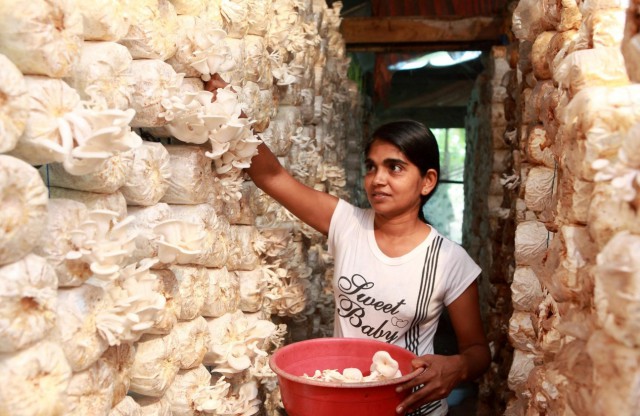- Multilateral donor’s Sri Lanka Development Update highlights boosting women participation in labour force could contribute to country grow faster, achieve more equitable growth
- World Bank Lead Economist Maurizio Bussolo says Sri Lankan women earn less as companies tend to pay only half of the amount offered to men
- Opines trend presents an opportunity to address gender wage disparities, increase female labour force participation
- World Bank Country Economist for Sri Lanka Shruti Lakhtakia asserts boosting female participation alone not sufficient, requires improvement in job quality, fair wages and benefits
- Insists on implementation of Women’s Empowerment Act and complementary protections
By Charumini de Silva/Daily FT
The World Bank in its latest bi-annual report, ‘Sri Lanka Development Update: Opening up to the Future’ highlighted that female labour force participation stands at a decade-low of 29.6%, stressing on substantial policy measures required to address inequality and ensure inclusive growth.
The report highlighted that unlocking untapped potential by increasing women’s participation in the labour force could contribute to the country grow faster and achieve more equitable growth. It also noted that gender gap in labour force participation persists, but closing these gaps can lead to sizeable gains for economies.
Speaking at the launch, World Bank Lead Economist Maurizio Bussolo said women are earning less in Sri Lanka as the companies tend to pay only half of the amount that they offer to men.
However, he said that export-oriented firms tend to hire women at almost double the rate of non-exporting firms.
“As companies become more export-driven and need to reduce costs, they hire women,” he explained in response to enquiry by journalists during the report launch on Thursday.
Despite their growing presence in export-driven sectors, he admitted that women in Sri Lanka still face several challenges to full participation in the workforce.
Bussolo said this trend presents an opportunity to address the gender wage disparities and boost female labour force participation.
World Bank Country Economist for Sri Lanka Shruti Lakhtakia stressed that boosting female participation alone is not sufficient; asserting that it also important to improve job quality, fair wages and benefits as they transition to formal employment, for driving long-term and sustainable contributions to the economy.
“Employers should not be drawn to female workers solely because they are a cheaper source of labour. It is important to ensure that women entering the labour force are protected, whether through equal pay, childcare provisions, flexibility in work hours or other necessary facilities,” she told the Daily FT.
Citing the Women’s Empowerment Act, which mandates equal treatment across a range of metrics, she stressed that enforcement of it and complementary protections are necessary.
Lakhtakia said to increase women’s participation in the labour force include; providing affordable childcare services to alleviate care giving constraints, disseminating information on job opportunities and the financial returns of employment, offering training programs focuses on socio-emotional skills to better prepare women for workplace challenges, engaging partners and family members to shift restrictive gender norms and support women’s empowerment and targeting women through social protection, safety nets and public-works programs to encourage workforce entry.
The World Bank’s South Asia Development Update also cited that raising female labour force participation rates in the region to those of men would increase regional GDP by up to 51%. It added that South Asia remains with one of the very low rate of female participation compared to the rest of the world.
As per the report, only 32% women are engaged in the South Asian labour market compared to 77% of men. This also reflects that female participation is only half of the total rate of the men in the workforce. In a developed economy the average female labour force participation is 54%.
